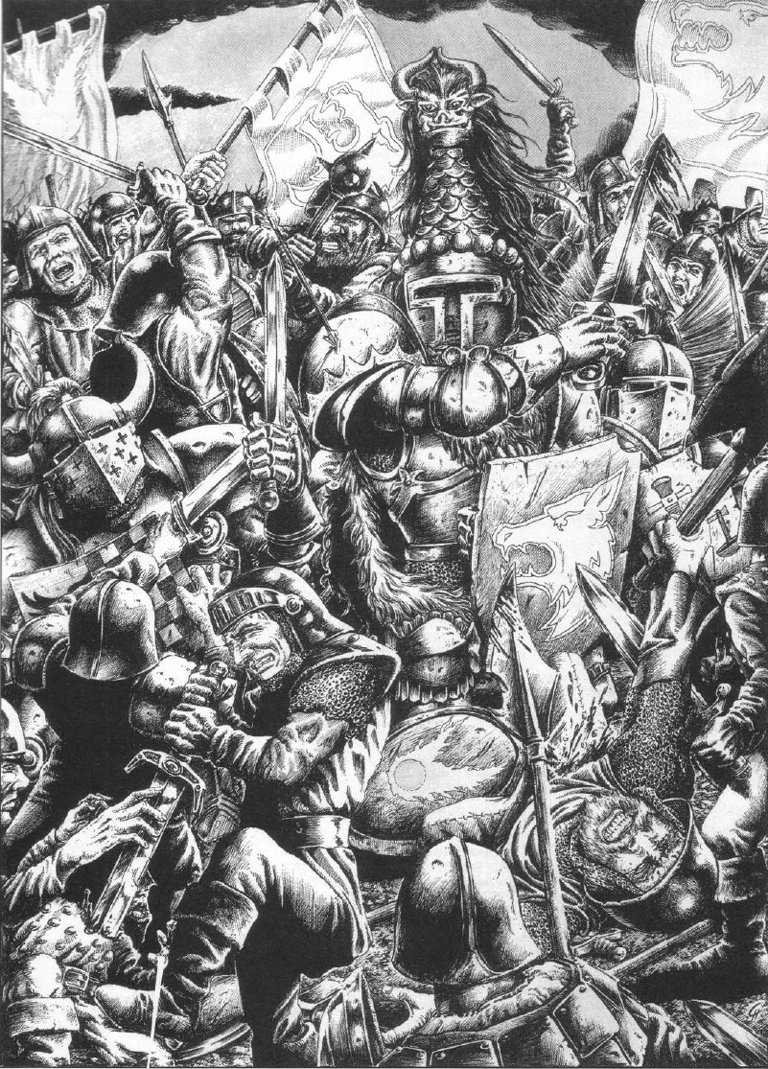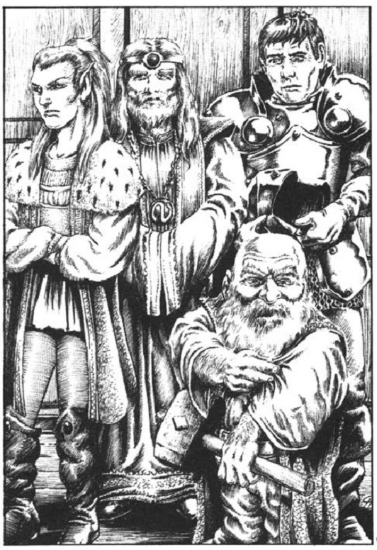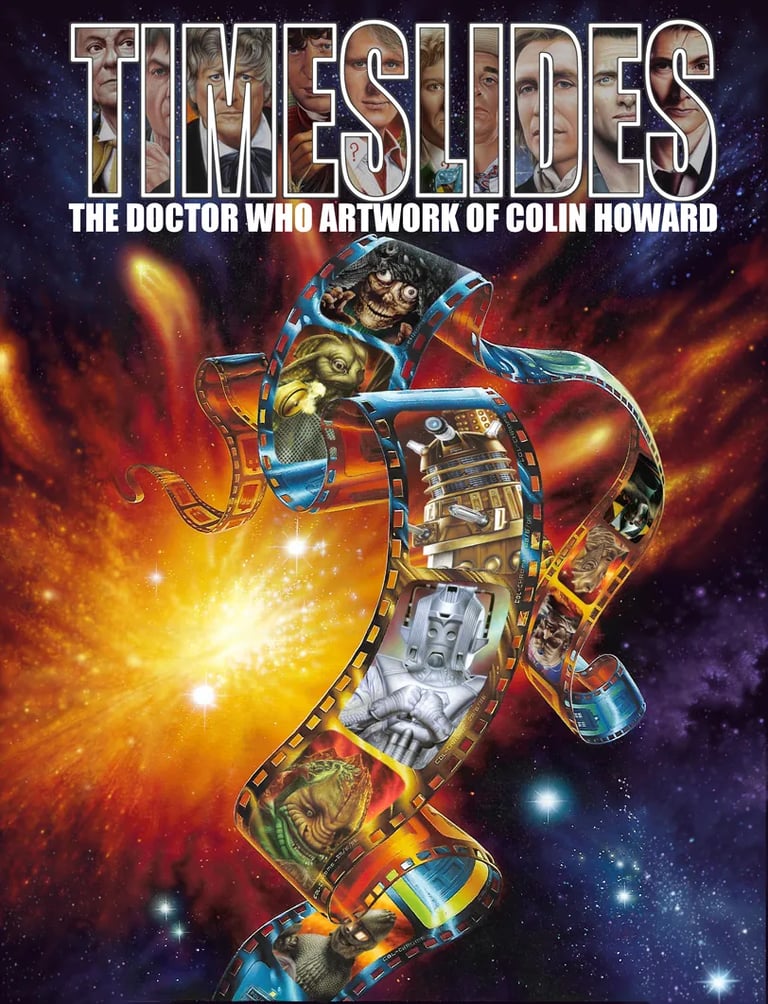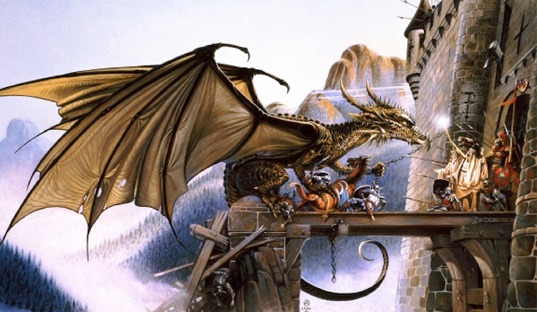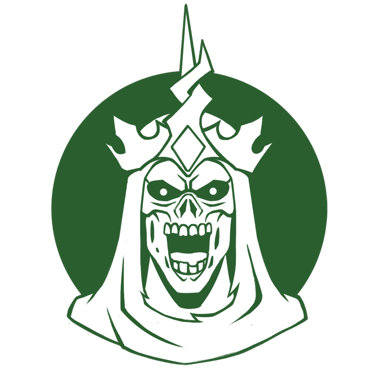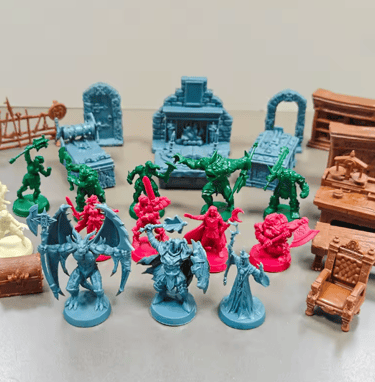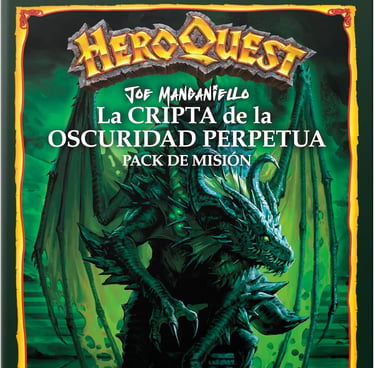Colin Howard - English version
ENTREVISTAS
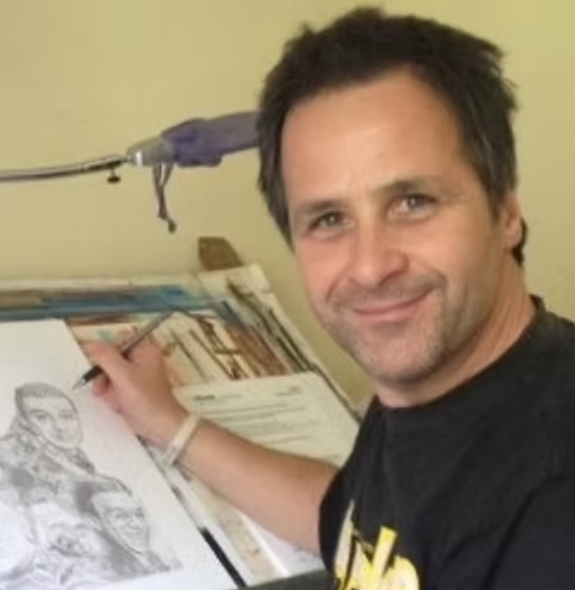

We are delighted to welcome the esteemed illustrator Colin Howard, whose distinctive style defined an entire era of Games Workshop products. His artwork, gracing the pages of White Dwarf and role-playing books, captured the grim and perilous atmosphere of the Warhammer world for a generation of gamers. We sat down with Colin to discuss his celebrated career, his creative process, and his perspective on the industry then and now.
Complete interview with Colin Howard
Introduction & Background
To begin, could you please outline your professional background and the path that led you to your role at Games Workshop?
Colin Howard: It was the late 1980's & I had been casting my illustrative net around to attempt to land some more work. I had began my self employed career, (mostly as a black and white rotring linework illustrator), with Doctor Who illustrations for Marvel UK, after being in a couple of Doctor Who books for WH Allen. As well as Doctor Who, another great childhood influence were Fantasy films7. I grew up on the Ray Harryhausen Sinbad & monster Movies. I also decided to read the Lord of the Rings trilogy... & so began my association with the denizens of Middle Earth.
Before your tenure at Games Workshop, were you a gamer yourself? If so, which genres or specific games were you particarly drawn to?
CH: I'd always concentrated more in video games, as I was lucky enough to be at the right age, for advancing from the home Atari console to PlayStation and Xbox. I loved the darker shooters & WWII games, Zombies etc. They don't serve the imagination as much as board games, but for the visually obsessed they're ideal.
At the outset of your illustration career, which artists were your primary sources of inspiration, and from whom do you feel you learned the most formative lessons?
CH: I taught myself techniques from closely observing Artists portfo in my late teens. Particular favourites were Christos Achilleos, Rodney Matthew's, Jim Burns & Jeff Cummins for their Rock & Metal album covers as well as Fantasy & Science fiction Art. Chris Achilleos was my favourite and I was lucky to meet him at a Doctor Who Convention after the Covid19 Pandemic. We hit it off & were early stages of planning calendar project before he sadly passed away.
Working with Games Workshop
Your work covered several illustrations for White Dwarf magazine. Do any of those commissions stand out in your memory, and which one might you regard most fondly and for what reasons?
CH: Yes White Dwarf was a regular gig for a couple of years. Mostly illustrating Warhammer 40,000. So tons of ariel sweeping illustrations featuring Space Marines and those gigantic Titan War machines with swarms of Marines across the sprawling battlefields. I used a fine nib Rotring rapidograph pen for the heavy detail levels required. Black and white linework is a very unforgiving format, as it commits you as soon as it hits the surface.
Creatively, which of Games Workshop's signature settings did you find more resonant: the heroic fantasy of Warhammer Fantasy Battle or the grim futuristic science-fiction of Warhammer 40,000?
CH: I think I preferred the Warhammer fantasy side, as more close up, intimate and facial expressions were incorporated, allowing more subtle conveying of mood for characters, rather than just physical stances and explosions etc across vast Apocalyptic battlefields.
During your time at Games Workshop, what was the nature of your relationship with other acclaimed artists of that era, such as Paul Bonner, Adrian Smith, Gary Chalk, or John Sibbick? Was there a collaborative atmosphere where ideas were exchanged, and do you remain in contact with any of your former colleagues?
CH: Unfortunately being a Freelance Artist is mostly a lonely profession. I would sit at home illustrating these frantic scenes, whilst essentially in isolation. The only opportunity to see another artist at work was when dropping in to GW/HQ in Nottingham via train from Norwich/Diss, where they had an in-house Artist, unfortunately I can't recall who it was.
Empire in Flames & Advanced HeroQuest
The 1989 Warhammer Fantasy Roleplay supplement, Empire in Flames, features interior art that prominently includes the four heroes from the Advanced HeroQuest board game, released contemporaneously. Can you shed some light on the history of these illustrations? Were these pieces commissioned specifically for Empire in Flames, or was the artwork originally developed for Advanced HeroQuest and subsequently repurposed?
CH: From memory, I think Empire in Flames was from my side all new commissions, as I said the majority of my work beforehand was all tied in with Space Marines & Epic Titan battles. So I think I was supplied with a few illustrations of the required characters, alongside a synopsis of the text for settings etc, for the many internal illustrations required. This is where my love of Fantasy films kicked in, with my ability to create the required illustration settings, being familiar with the realms and hardware involved.
Delving deeper into the creation of Empire in Flames, what was the typical workflow? Were you given a significant degree of creative freedom, or did the art briefs provide strict guidelines on composition and character portrayal? Was there any direct collaboration with the miniature sculptors of the era, such as Bob Naismith, to coordinate the artistic vision? We would be fascinated to hear any memorable anecdotes from that process.
CH: I would squirrel myself away, with pencil & pen and start scrawling away industrially on an A3 cartridge paper pad. I was very conscientious starting around 9am until 6pm often 6 days a week. This enabled me to achieve the level of detail I enjoyed producing in my illustrations and come in on time fordeadlines. Any required, preexisting characters were supplied by references, either in Art or pewter figure form so I could incorporate them.
Beyond the shared art, did you contribute any other illustrations directly to the Advanced HeroQuest core game or its expansion, Terror in the Dark? If so, could you elaborate on the extent of your involvement and the process for those commissions?
CH: As far as I can recall I didn't have any involvement with Terror in the Dark. At the time I was starting to achieve a little success with Cover artworks at Marvel UK and Virgin books for their 'Doctor Who tie-in's, so Games Workshop started to fade more from the forefront with other priorities. I had always dreamed of emulating my Art Hero's, with cover artworks...so the high intensity involved with purely illustration faded in importance.
Was any artwork commissioned from you for Empire in Flames that, for one reason or another, was not included in the final publication? If so, would you be willing to describe this unseen material for our readers?
CH: As much as I'd love to share some unseen artworks from that project, I'm sorry to say I don't recall any unused Art from 36 years ago...Some of my sketchbooks were damaged/destroyed in a leaky roofed outbuilding after we moved house, and were beyond repair/salvage.
Are any of the original physical artworks from this period still in your possession?
CH: I don't think I have anything left,as my submitted Art wasn't returned. By the time Games Workshop were advertising former Artists could request originals being returned... I had moved professionally onwards and was unaware, thereby missing their deadline for returns, so all my Art I'm guessing was thrown away/ disposed of.
Current Perspectives
Are you still active within the tabletop RPG or board game industry today, either professionally or personally?
CH: I'm afraid not. I had a 3-4 year tenure with the BBC providing 33 VHS Covers for the Doctor Who range as well as their Who books. That then dried up with the advent of Photoshop & I was replaced, only being asked to create various Ships/Alien's etc, when some degree of creative ability was required. I carried on with the Red Dwarf magazine covers and Quantum Leap novel covers for a while. I ended up doing Art agency work for years. I was eventually coaxed back to Doctor Who with working on the recent animation recreations with background art and renders for 3D objects/buildings for those missing 1960s stories.
From your perspective, what is the current state of fantasy and science-fiction illustration? What are your thoughts on the emergence of Al image generation and its potential impact on the creative industries?
CH: I try and keep a 'weather eye' on current trends in Sci-fi and Fantasy art and have seen some great talent emerge. However too great a reliance of photo reference results in 'samey' covers that all blend into one. It's great to be able to recognise Artists work. I'm sure some people can recognise my covers from my hero's when they're together. Admiring another artists work is always lovely, it helps keep you fresh and inspires improvement, which is alwayshighlyrecommended. Al is great invention when used in the right areas, as far as original thinking and creativity.... I'm not sure can be programmed..when it can I guess we all become Surplus to requirements.
Could you tell us about your current professional endeavours? Are there any forthcoming projects you would like to share with us?
CH: Unfortunately my Artistic career is virtually terminated. In 2010 I was diagnosed with Multiple Sclerosis. It started in my lower half and I was able to carry on with art for another 10years on and it became Primary Progressive, this has now taken my 'feel' in my right hand and arms, meaning most art barring digital is now not possible. I am now compelling a second Doctor Who Art portfolio 'IMAGINARIUM' to follow TIMESLIDES-The Doctor Who Artwork of Colin Howard which came out a couple of years ago via Candy Jar Books & is now available on Amazon. This second portfolio will feature more original and early works, commissions etc, as well as remaining book/magazine and official calendar pieces.
To conclude, do you currently find time to play any board games or role-playing games?
CH: Again I'm sorry to say, I'm afraid not. Again, even leisure pursuits are difficult when you can't move around, hold and easily manipulate day to day objects...so pencils, dice, playing pieces, cards, even game controllers are now teetering on the edge on the possibility of interaction. Typing this interview was indeed a challenge in itself.
Conclusion
We extend our sincere gratitude to Colin Howard for his generosity in sharing such fascinating insights into a pivotal period of tabletop gaming history. His contributions remain a benchmark for fantasy illustration, and his work continues to inspire artists and players alike. We thank him for his time and for the effort he has taken to answer these questions.
For more information about Colin, you can visit his personal website https://www.colinhowardart.com/
